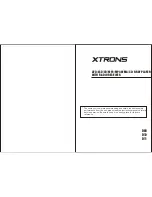
Spatial FOG Reference Manual
Page 87 of 144
Version 2.3
03/05/2018
12.4.2
GNSS Fix Output
In this function, the pin is low when there is no GNSS fix or a 2D fix and high when
there is a 3D, SBAS, Diferential or RTK GNSS fix.
12.4.3
Odometer Input
This function is designed for low resolution vehicle speed sensors and odometers. It
expects a normally low input with a high state for the trigger. If the pulse length is
more than 0.1 metres this odometer input function should be used, if it is less than 0.1
metres the wheel speed sensor function should be used. Please contact Advanced
Navigation support for help integrating with your speed sensor.
Parameter
Value
Trigger
Low → High
Maximum Frequency
600Khz
Maximum Pulse Rate
4294967 pulses/metre
Table 19: Odometer Specifications
12.4.4
Zero Velocity Input
When using this function, a high state indicates to Spatial FOG that it is stationary. The
low state indicates that the vehicle is not stationary. Use of this function can
significantly improve drift performance when a GNSS signal is not available.
12.4.5
Pitot Tube Input
This function is designed for fixed wing aircraft to enhance navigation through the use
of a pitot tube to measure airspeed. It requires a diferential pressure sensor that has a
frequency output such as the Kavlico P992 (frequency output option) or the
Paroscientific series 5300. Please contact Advanced Navigation support for help
integrating with a pitot tube.
12.4.6
NMEA Input
This function accepts external data in the NMEA format. Advanced Navigation
recommends against using NMEA where possible due to the inefciency, inaccuracy
and poor error checking of the format. All NMEA messages received must have a valid
checksum. Supported messages are listed below. The recommended combination of
messages are GPGGA, GPVTG and GPZDA with optional messages GPGSV and GPGSA.
Содержание Spatial FOG Dual
Страница 1: ...Spatial FOG Reference Manual ...
















































